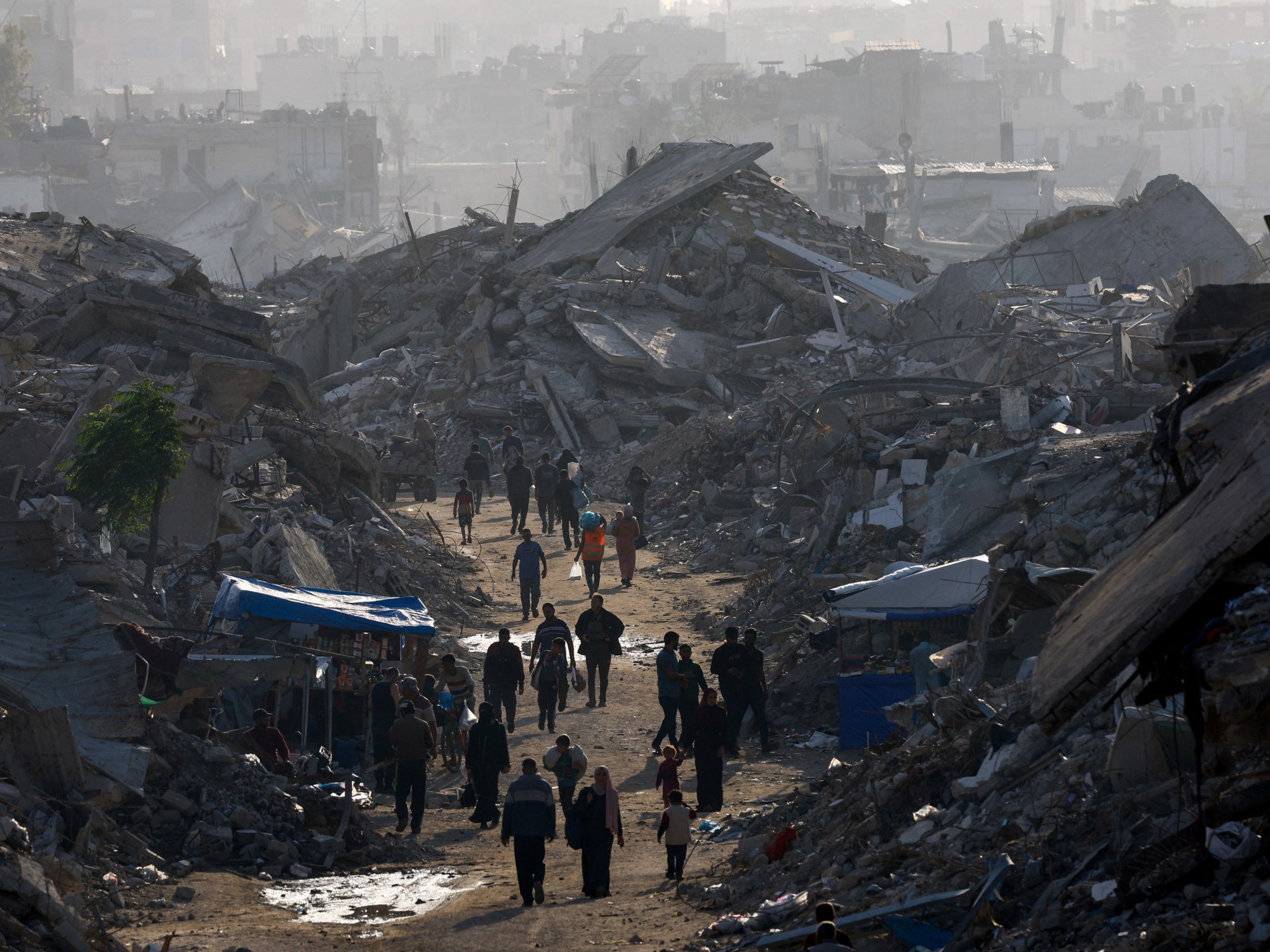Since the ceasefire was declared on October 10, the division of Gaza into a so-called “green zone” under the control of the Israeli army and a so-called “red zone” where Palestinians have been displaced and contained has grown. The “yellow line” that separates the two is invisible.
The administration of Donald Trump’s administration has indicated that reconstruction will only be carried out in the “green zone” where Israel and its allies have been developing plans for ‘alternative safe communities’.
Although there were rumors last week that these plans were abandoned, humanitarian workers have informed me that Rafah, southern Gaza, is still the site of the first such community, and 10 more are planned along the yellow line and into the north.
If these “safe communities” are to be built, they will cause Gaza to become deadly fragmented. The intention behind the establishment of these camps is not to provide humanitarian aid, but rather to establish managed dispossession zones where Palestinians would be screened and vetted before entering. They would also be expressly prohibited from going back to the restricted and censored “red zone.”
What Israel has long desired to do in Gaza is recycled in these plans. As a UN official in charge of coordinating humanitarian operations in Palestine, I first heard about the use of “bubbles,” an initial, telling euphemism that the Israeli government had suggested.
The so-called ceasefire agreement in Gaza exhibits such a grim reality. It won’t bring peace; instead, it will sever Gaza and the Palestinian Authority’s ability to rescind. It’s more of a Gaza piece plan, in fact.
The UN Security Council approved the plan on Monday this week, granting authorization to an international stabilization force (ISF) to provide security and a board of peace to govern Gaza. What regions, however, will these forces secure? These forces cannot maintain an agreed-upon peace. The ISF would be positioned along the yellow line and would secure these newly established camps, as per maps I’ve seen of the “alternative safe communities.”
Unsurprisingly, Hamas rejected the UNSC resolution. It was obvious that the agreement’s provisions were not what had been reached. Point 17 may now be inferred in the 20-point Trump plan, which was included as an annex to the resolution: “in the event Hamas delays or rejects this proposal, the above, including the increased aid operations, will proceed in the terror-free areas handed over from the IDF]Israeli army] to the ISF.” The “alternative safe communities” may become the only authorized aid delivery centers in this way, extending the Palestinians’ total blockade in Gaza.
The UNSC-endorsed plan now incorporates the deadly logic of evacuation orders that have plagued the past two years and have driven Palestinians from their homes. People who remain outside of the alternative communities, in the “red zone,” run the risk of being labeled “Hamas supporters” and thus ineligible for protection under Israel’s warped interpretation of international law, as has been demonstrated in recent days.
Official planning consistently ignores the fate of Palestinians in the “red zone.” In fact, Israeli registration laws intended to stifle criticism and check staff for compliance are preventing humanitarian organizations from being able to save lives.
The concept of contained communities is not entirely new. In Malaya in the 1950s, the British and Americans established “strategic hamlets” in Vietnam in the 1960s, and the colonial authorities in Rhodesia (present-day Zimbabwe) established “protected villages” during the so-called “counter-insurgency” in the 1970s.
In exchange for aid, civilian populations were forced and coerced into camps where they were screened. The intention was to reduce the general public’s support for colonial-era resistance organizations. It failed .
Bantustans, slang for “independent homelands” created by the apartheid regime in South Africa to enslave and control the Black population. Additionally, they failed to stop a colonial-colonial apartheid regime from crumbling.
Israel’s occupation of Gaza will remain intact and strengthened thanks to the peace plan, which was put in place rather than negotiated. The UNSC has supported a move that goes against the International Court of Justice’s (ICJ) rulings regarding the occupied Palestinian territory, essentially whitewashing a massacre scene and creating a monument to impunity.
All of this occurs during a ‘ceasefire’, during which Palestinians continue to die for breaking the law created by the illegal occupation.
Countries that don’t want to sanction Israel may be relieved to revive trade and stifle public scrutiny because of this phase’s potential as the end of the conflict.
Implementing the ICJ’s decisions will require the exact accountability that the US and Israel have worked hard to avoid. New political coalitions are necessary to demand the equal application of international law while Western powers continue to undermine these institutions. This requires Palestinian-led reconstruction that ensures Palestinians are not perpetually bare to survive, and the unrestricted delivery of humanitarian aid to Palestinians wherever they are in the strip.
The international forces’ security surrounding Gaza’s gated communities would not be sufficient to erode the foundations of a so-called rules-based order. The only thing that can be done is to return to the guiding principle that has so far been ignored: the people’s unalienable right to choose their own future.
Source: Aljazeera

Leave a Reply